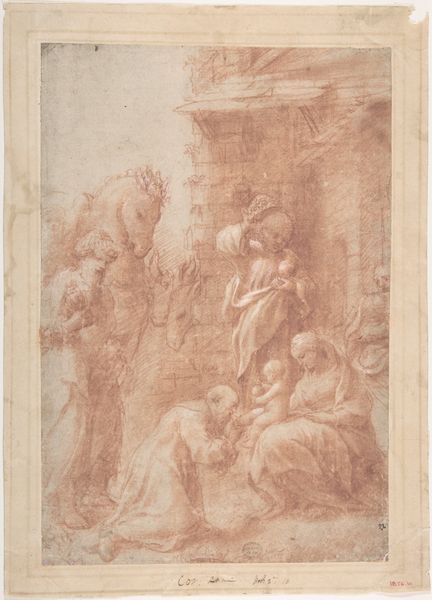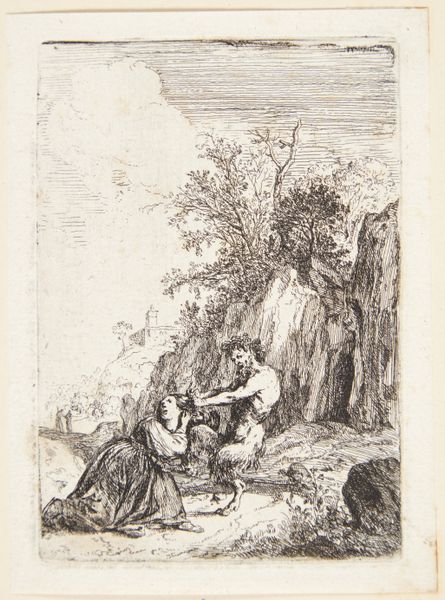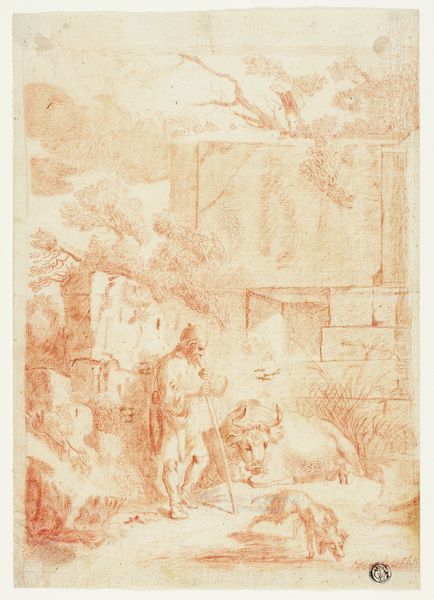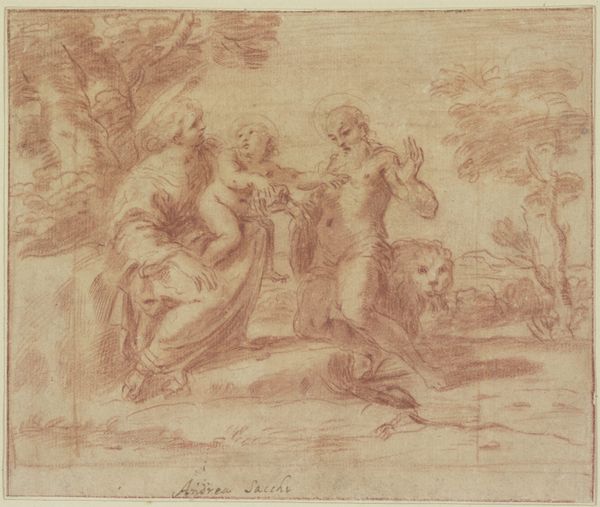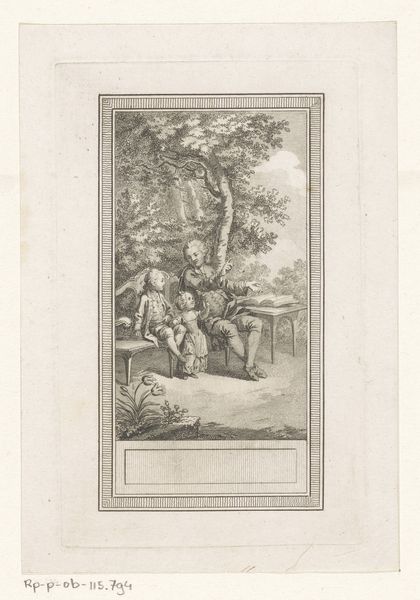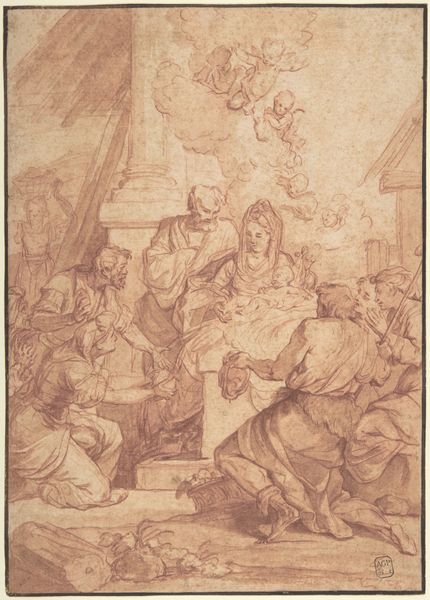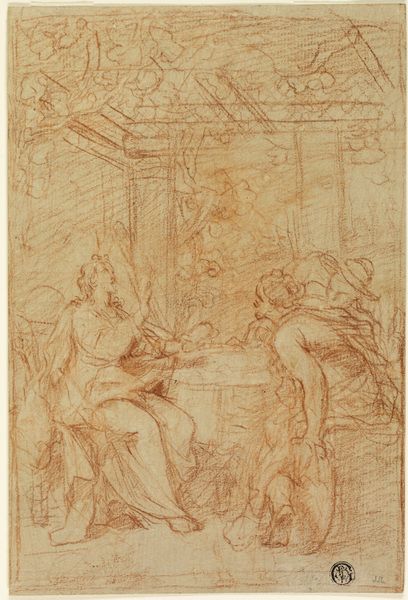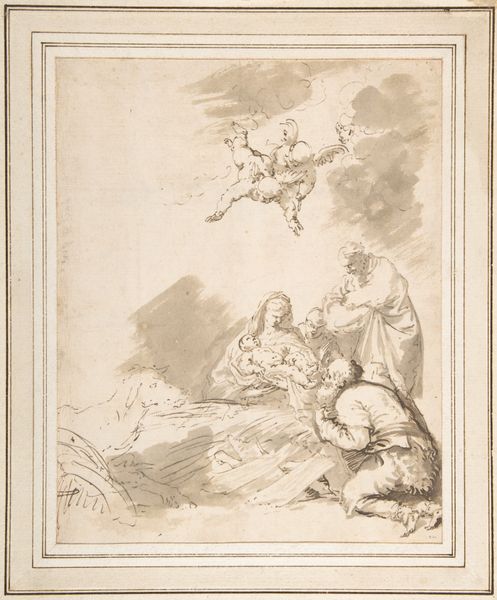
drawing, ink, pen
#
drawing
#
narrative-art
#
figuration
#
11_renaissance
#
ink
#
pen
#
history-painting
Dimensions: 127 mm (height) x 120 mm (width) (bladmaal)
Editor: Here we have Bernardino Campi's "The Entombment of Christ," an ink and pen drawing created sometime between 1522 and 1592. It's currently at the SMK in Copenhagen. The loose lines create a feeling of immediacy, as if capturing a fleeting moment of grief. How might we interpret the historical context influencing this poignant depiction? Curator: Considering the historical context, the visual representation of Christ's entombment becomes less about simple depiction and more about a culturally-loaded spectacle. Notice the gathering of figures—are they participants in a solemn ceremony or a crowd responding to a significant public event? What visual cues might lead us to interpret the emotional state depicted, considering both religious norms and artistic trends of the Renaissance? Editor: I see that there is a group behind Christ. So are you saying that Campi’s choice to show Christ's burial with an audience adds to the historical impact? Curator: Precisely. Artworks like this become artifacts reflecting not only a biblical event but also the sociopolitical role of the Church and artistic patronage during the Renaissance. What implications do you see regarding the purpose and viewing of religious imagery at that time, especially regarding elite vs. public audiences and their interactions with such powerful displays of faith? Editor: So the piece tells a story not just from the Bible, but about the time it was made? That makes you wonder who commissioned it and why, doesn’t it? Curator: Exactly. Understanding the historical currents informs how we interpret the subject matter, and illuminates aspects beyond just surface-level religious illustration. I now notice your initial feelings of immediacy— how might that be due to how Campi had to engage an audience when constructing this religious moment for them? Editor: It's like the artwork is a window into both the past it portrays and the past in which it was created. Thank you!
Comments
No comments
Be the first to comment and join the conversation on the ultimate creative platform.
